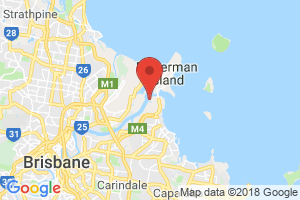Station overview—Lytton

Map marker is indicative only. It does not reflect the exact location of the station.
See all stations in South East Queensland region.
- Monitoring period
- 1 January 2016–
- Parameters monitored
Current measurements at 12pm 31 December 2025
| Parameter | Measurement | Running average |
|---|---|---|
| Particle PM2.5 | 7.9µg/m³ | 6µg/m³ (24hr avg) |
| Particle PM10 | 50.9µg/m³ | 27.3µg/m³ (24hr avg) |
| Sulfur dioxide | 0.002ppm | 0.002ppm (1hr avg) |
| Parameter | Measurement |
|---|---|
| Wind direction | 4deg |
| Wind speed | 7m/s |
| Humidity | 67.4% |
| Temperature | 25.5°C |
| Rainfall | 0mm |
Legend to air quality category colours about category values
- Good
- Fair
- Poor
- Very poor
- Extremely poor
None of the data is validated (0% validated, 0/8 records)
About air quality categories
Air quality categories are used to make it easier to interpret air quality data by reducing the complexity associated with different pollutant concentration units and air quality guideline values.
Each air quality measurement from a monitoring station is assigned an air quality category rating based on comparison of the measurement value against the relevant air quality guideline. Five colour-coded air quality categories are used, being ‘Good’ (green), ‘Fair’ (yellow), ‘Poor’ (orange), ‘Very poor’ (red) or ‘Extremely poor’ (dark red). Values greater than the air quality guideline will be appear as ‘Poor’, ‘Very poor’ or ‘Extremely poor’.
About these parameters
- Particle PM2.5
Airborne particles less than 2.5 micrometres in diameter, referred to as PM2.5, can be hazardous to human health or cause a nuisance when present in the air at elevated levels. They are capable of penetrating the lower airways of humans and can cause possible negative health effects.
The guideline for Particle PM2.5 is 50µg/m³ (1hr avg) and 25µg/m³ (24hr avg).
Particle PM2.5 is measured in micrograms per cubic metre.
- Particle PM10
Airborne particles less than 10 micrometres in diameter, referred to as PM10, can be hazardous to human health or cause a nuisance when present in the air at elevated levels. They are capable of penetrating the lower airways of humans and can cause possible negative health effects.
The guideline for Particle PM10 is 100µg/m³ (1hr avg) and 50µg/m³ (24hr avg).
Particle PM10 is measured in micrograms per cubic metre.
- Sulfur dioxide
Sulfur dioxide (SO2) is a colourless gas with a sharp, irritating odour. It is produced by burning fossil fuels and by the smelting of mineral ores that contain sulfur.
The guideline for Sulfur dioxide is 0.1ppm (1hr avg).
Sulfur dioxide is measured in parts per million.
- Wind direction
When high pollutant concentrations occur at a monitoring station, wind data records can determine the general direction and area of the emissions. Identifying the sources means planning to reduce the impacts on air quality can take place. The measurement indicates the direction the wind is coming from.
Wind direction is measured in degrees.
- Wind speed
When high pollutant concentrations occur at a monitoring station, wind data records can determine the general direction and area of the emissions. Identifying the sources means planning to reduce the impacts on air quality can take place.
Wind speed is measured in metres per second.
- Humidity
Like temperature and solar radiation, water vapour plays an important role in many thermal and photochemical reactions in the atmosphere.
Humidity is measured in percentage.
- Temperature
Measuring temperature supports air quality assessment, air quality modelling and forecasting activities.
Temperature is measured in degrees Celsius.
- Rainfall
Rain has a ‘scavenging’ effect when it washes particulate matter out of the atmosphere and dissolves gaseous pollutants. Removing particles improves visibility. Where there is frequent high rainfall, air quality is generally better.


